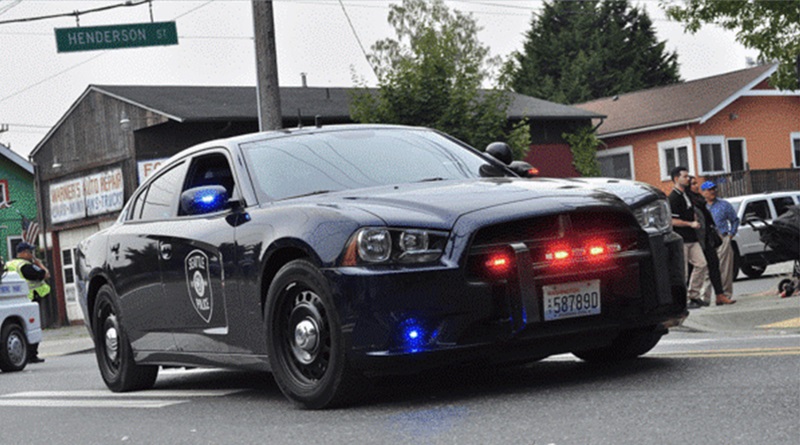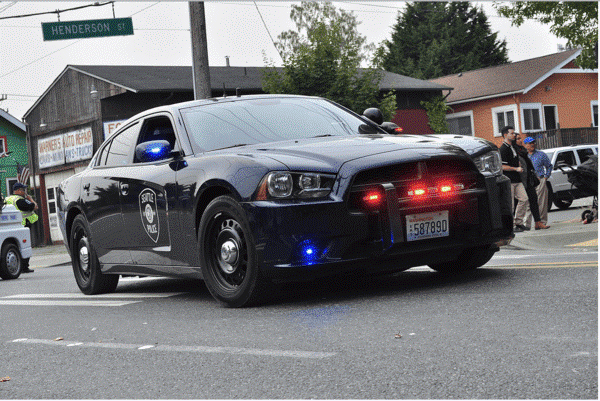

When I first heard about another bit of Emerald City lunacy, sadly, it didn’t surprise me. I hate picking on Seattle, after all, I worked for the Seattle Police Department (SPD) for over two decades. But why do they keep doing this… stuff to their cops?
Many years ago, I was talking with a squad mate about the city’s micromanaging of police officers. He joked that before we knew it, they’d issue us pocket flowcharts to determine what we were allowed to do in a given situation.
If A, then do B. If C, then proceed to D, unless E happens, and then reconsider A.
This seems ridiculous, but it’s happening. This time, a Seattle police officer has been reprimanded for initiating a pursuit of an assault and car theft suspect who’d also rammed the officer’s patrol car—repeatedly—before escaping.
Where’s the logic in saying an officer cannot pursue an assault, car theft suspect who’s also rammed a police car occupied by a police officer? Don’t look for logic; it’s not there. He was reprimanded specifically for failing to obtain a supervisor’s “authorization” to pursue.
One issue is that the department’s pursuit policy is more restrictive than state law—which has not recently been what you’d call pro-cop. The officer explained that if he’d waited for authorization, “the suspect would have been too far gone for the officer to effectively and safely catch up.”
Remember, the officer is the law enforcement official at the location. He’s reacting to the circumstances in real time, seeing, hearing, and feeling what’s happening at the crime scene. When your job is to enforce the law (catch the bad guys), your impetus is to act. Even if you argue that the officer was adrenaline-compromised at the scene, a supervisor terminated the pursuit, and the officer complied immediately. But that’s not enough, these days. A pound of flesh is required from cops.
Here are some pertinent details. A Seattle cop was investigating a complaint from a car owner at his house that his vehicle had just been stolen from out front. Rather than merely take a report, which the powers-that-be seem to prefer over police work, the officer used the victim’s GPS tracker to locate the stolen car at a nearby fast food restaurant parking lot. That’s called good police work, if anyone is wondering.
He and other officers made a plan to block the car and arrest the thief. However, when the officer implemented his plan, instead of surrendering, the driver allegedly, repeatedly, and “intentionally…” rammed his patrol car (violent?) before fleeing “at a high rate of speed.”
So, here’s the list of alleged offenses:
- Assault 3 (violent) (felony)
- Vehicular Assault (violent) (felony)
- Vehicle Theft (felony)
If course a cop should be able to pursue a violent felony suspect in such circumstances.
Seattle Police Officers Guild (SPOG) President Mike Solan told KTTH talk show host Jason Rantz he believes the continual nitpicky “reforms” and “overhauling” of the city’s policies “leads to lawlessness…” referencing “the rise in crime since Black Lives Matter-inspired policies were implemented in Seattle and statewide.”
Solan wonders how “you can have a suspect ram a police officer and… not being able to take that person into custody, or at least pursue them, to hold them accountable, at least put them in handcuffs for maybe perhaps a few hours in jail.” This is what cops have been reduced to hoping for regarding accountability.
Since the incident involved violence, the original Assault 3 and the ramming of the officer in his patrol car, the officer felt justified in pursuing the suspect. Allow me to don my crusty cop cap. In my day, a pursuit for these offenses would not have been a question. In fact, not pursuing would more likely have been questioned.
Rantz described at MyNorthwest.com that the pursuit was “brief,” during which “the officer drove through a red light…” at a clear intersection. The officer’s supervisor (sergeant) then called off the pursuit, and the officer discontinued immediately.
So, how was the officer rewarded for his proactive police work? He was reprimanded for, well … once again, for doing police work. Rantz said, “the Office of Police Accountability (OPA) sustained a complaint by the officer’s supervisor for violating the department’s pursuit policy because the pursuit began without authorization.” (i.e., refer to flowchart).
To give the sergeant the benefit of the doubt, these days, it’s likely the supervisor would have been disciplined if he or she hadn’t submitted a complaint against the officer. I don’t know if this was the case, but I’m going to choose to look at it that way until I hear otherwise.
Think about how burdensome, even ridiculous it is for a trained, sworn officer to observe a violent crime in progress or a violent criminal fleeing and having to stop to get permission before pursuing. In the time it takes to get that supervisor authorization, the suspect will be long gone.
If the officer doesn’t get the authorization, the suspect gets away. But, if the officer gets permission, he or she either has to drive at a higher rate of speed to catch up to the suspect or, more likely, the suspect gets away. Is anyone sensing a trend here?
Solan also told Rantz, “‘I think it’s emblematic of… the policies that have handcuffed our ability to effectively do our jobs. And you become a police officer… to catch bad people doing bad things, to protect the public. But when we’re administratively handcuffed to prohibit us from doing so… the public is the victim…. And the administrative process… police officers now have to go through in terms of discipline are extreme.’”
The investigative process alone has become disciplinary for officers regardless of the findings. In this case, Rantz points out the incident happened in mid-November 2023. But OPA didn’t interview the officer until late March 2024. Next, the officer didn’t find out until June 26th, 2024, that the reprimand was upheld.
Is there any mystery that a torrent of officers keep flooding out the SPD exit? As Rantz put it, “nearly 700 officers… [have left] the department since the Seattle City Council embraced the defund movement.”
But the following statistic is even more alarming. Since the start of 2024 through July, “61 officers…” have left SPD, “including 11 student recruits.”
Now, back to that handy dandy officer pocket flowchart:
If A happens: The suspect points a gun at you.
Then B: First, obtain supervisor authorization to discharge your firearm at the suspect.
If C happens: The supervisor eventually authorizes you to shoot.
Then D: Disregard C; you probably won’t need it.
Make a difference. Support the NPA.